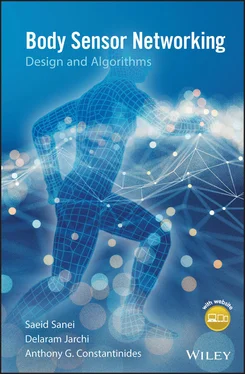Bipolar disorder (used to be called manic depression): a mental abnormality that causes extreme mood swings including emotional highs (mania or hypomania) and lows (depression). When depressed, the subject may feel sad or hopeless and lose interest or pleasure in most activities. When the mood shifts to mania or hypomania (less extreme than mania) the patient may feel euphoric, full of energy, or unusually irritable. These mood swings can affect sleep, energy, activity, judgement, behaviour, and the ability to concentrate.
Cancer: there are mainly two types of brain cancers called primary and secondary brain cancers. The former appears as benign or metastatic tumours such as glioblastoma and the latter is due to spreading cancers originated in other parts of the body into the brain. Headache, feeling sick, and seizure are the typical symptoms of brain cancer. Some examples of brain tumours are explained in the related part of this section.
Central nervous system disease: a broad category of conditions in which the brain and the nerves in the spinal cord do not function normally, limiting health and the ability to function. This can be due to an inherited metabolic disorder, the result of damage from an infection, a degenerative condition, stroke, a brain tumour, or arise from unknown or multiple factors. Movement disorders such as Parkinson's disease, dystonia, and essential tremor are central nervous system conditions. What they have in common is the loss of sufficiently intact nervous system circuits that govern functions as varied as memory formation (in Alzheimer's) or voluntary motion (in movement disorders).
Cerebral palsy: a condition that affects muscle control and movement. It is usually caused by an injury or infection to the brain before, during, or after birth. It may also be due to lack or shortage of oxygen in the fetus brain, genetic problem, or other abnormal brain development. Children diagnosed with cerebral palsy often have difficulties in controlling muscles and movements as they grow and develop.
Cerebrovascular disease: the result of disease in the arteries and blood vessels in the brain which can cause blockage of food and oxygen supply to parts of the brain, leading to stroke.
Creutzfeldt–Jakob disease (CJD) (mad cow disease): a fatal neurodegenerative disease often with a lifetime of less than one year. Early symptoms include dementia, change of personality, and hallucinations [24]. The symptoms of CJD are caused by the progressive death of the brain's nerve cells, which is associated with the build-up of abnormal prion protein molecules forming amyloids [25].
Dementia (Alzheimer's, mild cognitive impairment): a worldwide problem which affects women more than men, and is the result of a number of brain diseases and abnormalities which lead to deterioration of memory, consciousness, and consequently physical disability and early death of the brain. It may also cause behavioural change, confusion and disorientation, delusion and hallucination, communication problems, problems in judging speed and distances, and even craving for particular foods. Alzheimer's is the most common dementia type but there are other dementias, including vascular dementia, dementia with Lewy bodies, and frontotemporal dementia. Research has shown that dementia causes loss of communication between brain cells and brain zones [17, 26].
Depression: a common mental disorder that causes people to experience depressed mood, loss of interest or pleasure, feelings of guilt or low self-worth, disturbed sleep or appetite, low energy, and poor concentration. It is different from feeling down or sad and affects people of every age. A person experiencing depression often has intense emotions of anxiety, hopelessness, negativity, and helplessness, and the feelings stay with them for a long time [24].
Encephalomyelitis: inflammation of the brain or spinal cord which can be the result of various diseases such as viral disease, mosquito bite, AIDS, or syndromes.
Encephalopathy: various brain disorders, and also reflects structural and anatomical defects in the brain.
Hydrocephalus: a condition in which there is an abnormal accumulation of cerebrospinal fluid in the brain [27]. This typically causes increased pressure inside the skull. Hydrocephalus can be due to birth defect or because of an injury in older age. In babies there may be a rapid increase in head size. Other symptoms may include vomiting, sleepiness, seizures, and downward pointing of the eyes. Older people may have headaches, double vision, poor balance, urinary incontinence, personality changes, or mental impairment.
Huntington's disease (after George Huntington 1872 – also known as Huntington's chorea): an inherited brain disorder which causes death of brain cells [28]. It starts with occasional mood swings or mental abilities [28]. It is followed with lack of coordination and unsteady movement [29]. As the disease advances, uncoordinated, jerky body movements become more apparent [28]. The physical abilities gradually worsen until movement coordination becomes severe and the person is unable to walk [28, 29]. Mental abilities generally decline into dementia [30]. The specific symptoms vary somewhat between people [28]. The disease symptoms usually begin between 30 and 50 years of age but can start at any age [30, 31].
Idiopathic intracranial hypertension: a neurological condition of unknown cause, with symptoms very similar to those of a brain tumour, defined by increased intracranial pressure around the brain without the presence of tumour or disease.
Meningitis: an inflammation of the meninges (the protective membranes that cover the brain and spinal cord) caused by an infection. The inflammation can cause damage to the brain and spinal cord. Acute bacterial meningitis is rapidly developing inflammation of the tissue layers and of the fluid-filled space between the meninges (subarachnoid space) when it is caused by bacteria.
Migraine: affects approximately 15% of the population. It is a primary headache disorder characterised by recurrent headaches mostly severe [32]. Typically, the headaches affect one side of the head, are pulsating in nature, and last for 2 to 72 hours [32]. The symptoms can be nausea, vomiting, and sensitivity to light, sound, or smell [33]. The pain is generally made worse by physical activity [34]. Up to one-third of people have an aura: typically a short period of visual disturbance which announces the onset of headache in advance [34]. Occasionally, an aura can occur with little or no headache after that [35]. Migraines are believed to be due to a mixture of environmental and genetic factors [36].
Multiple sclerosis (MS): a disease affecting or damaging the myelin which is the covering layer of nerve cells in the brain or spinal cord [37]. This damage disrupts communication between cells in the nervous system resulting in many signs and symptoms, including physical, mental, and sometimes psychiatric problems [38–40]. Double-vision, blindness of one eye, muscle weakness, trouble with sensation, and trouble with coordination are the specific symptoms [37]. MS is a degenerative disease and gradually goes to complexity. Brain MS is more severe. Although the actual cause is not clear, the underlying mechanism is thought to be either destruction of the immune system or failure of the myelin-producing cells.
Paralysis: the inability to move a part of the body temporarily or permanently. In almost all cases, paralysis is due to nerve damage, not to an injury to the affected region. Often an injury in the middle or lower regions of the spinal cord is likely to disrupt function below the injury, including the ability to move the feet or feel sensations, even though the actual structures are completely healthy. In this situation, the brain is unable to relay a signal to an area of the body due to injuries to the brain. However, in some cases the brain is able to sense touch and other sensations in the body, but is unable to effectively relay a response due to injuries in the spinal cord.
Читать дальше












